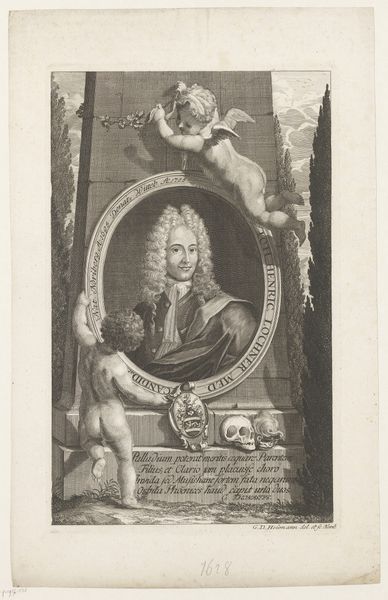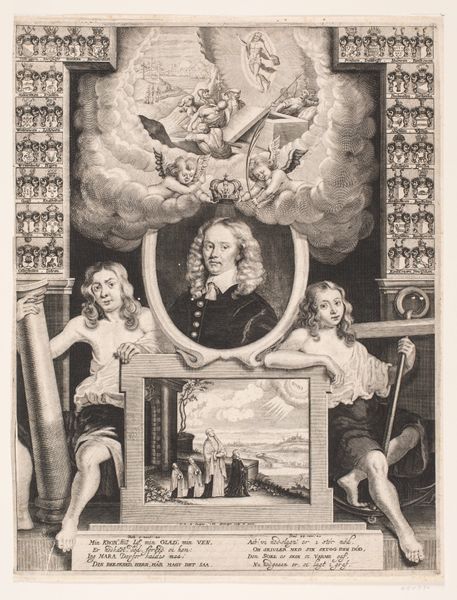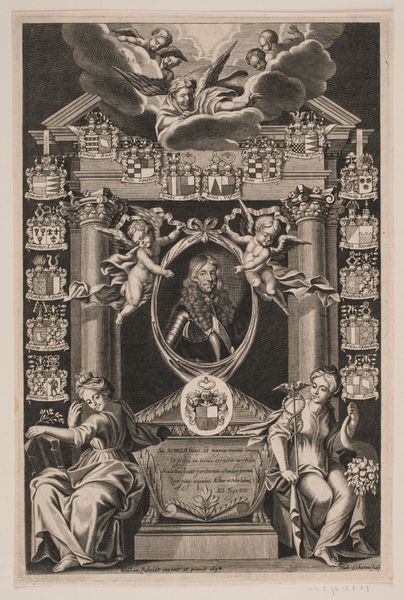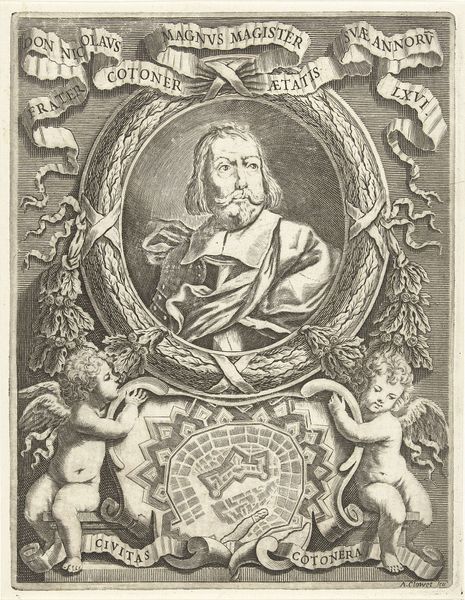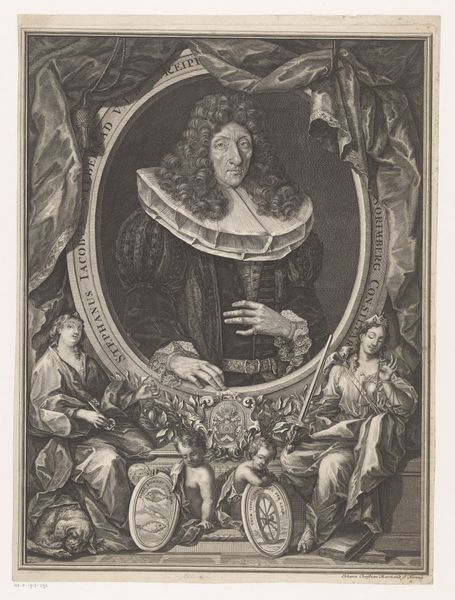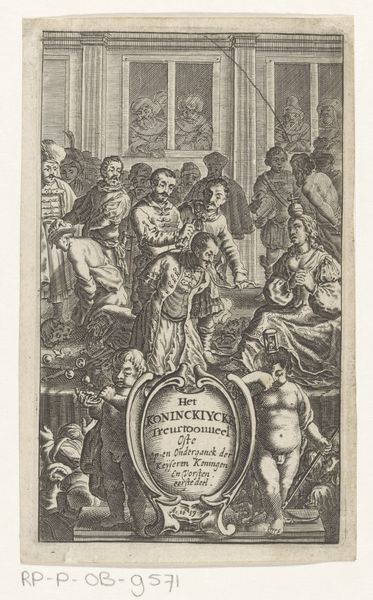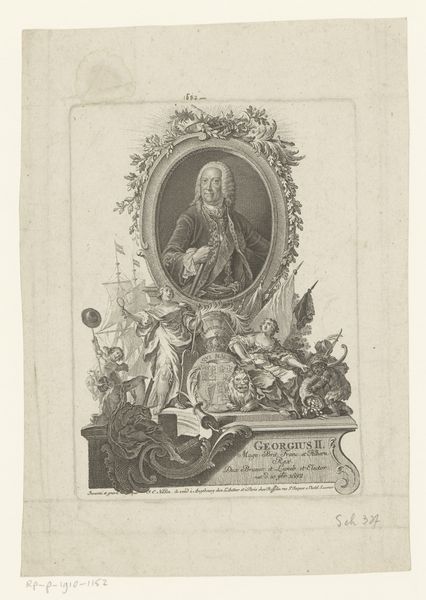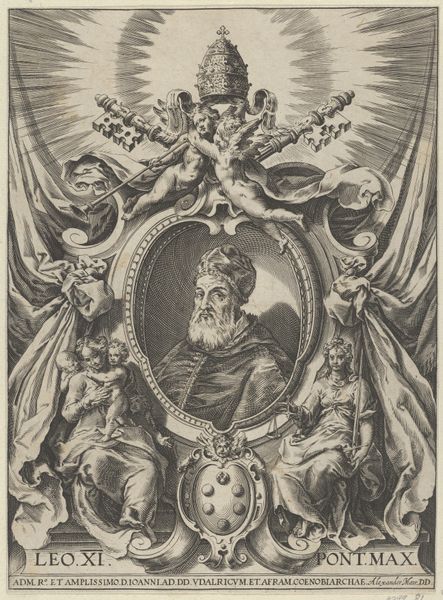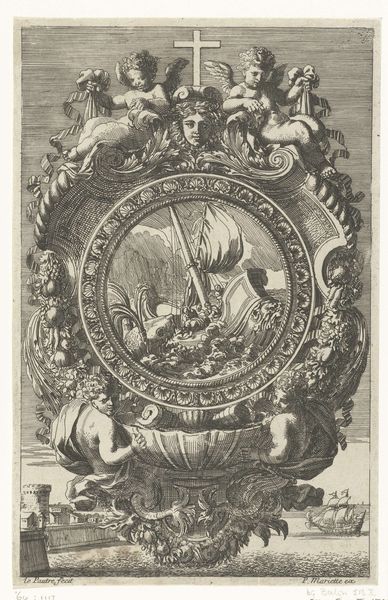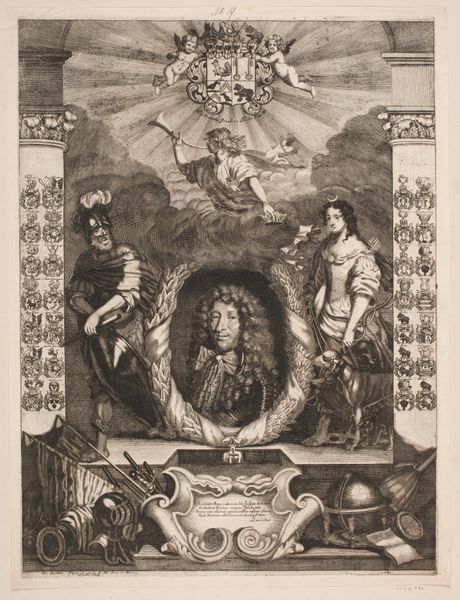
drawing, print, engraving
#
portrait
#
drawing
#
baroque
# print
#
old engraving style
#
men
#
history-painting
#
engraving
Dimensions: Sheet: 12 1/16 × 8 1/2 in. (30.6 × 21.6 cm)
Copyright: Public Domain
Curator: Look at this interesting Baroque engraving. This print of "Marc de Wilson," dating roughly from 1635 to 1670, is by Nicolas Regnesson. It is currently housed here at the Metropolitan Museum of Art. Editor: My first impression is one of grandiosity, but also of slightly awkward assemblage. The details of the heraldry and costuming must have involved some meticulous work, even the strange contrast of textures between the smoothness of Wilson's face and the roughness of the figures surrounding him is striking. Curator: Yes, consider the labor involved in producing such a detailed engraving, particularly the inscription around the portrait. But what about the societal role this image played, showcasing the sitter’s identity as a "Chevalier," how did such depictions influence notions of status and nobility? Editor: It's impossible to ignore how class divisions underpinned artistic production itself! A commission like this provided income, prestige, and a network of connections for Regnesson, reflecting a clear material exchange that supported artists within the social structure of the time. The quality of paper used, the ink—these material choices signalled worth. Curator: Exactly, and examining this work through its historical context is fascinating. It speaks volumes about the cultural significance attached to portraits during the period and how these images reinforced power structures, as well as a subtle glimpse into the history of its consumption as an artwork for potential historical paintings. Editor: The choice of imagery too. A lion, what looks like Hercules with a club – where were those materials and objects sourced from, and who were involved in their making? Curator: Good point! I’m wondering what sort of influence institutions like the Met exert on our interpretation and even its survival today. The Met's decision to collect and exhibit this work shapes its meaning. Editor: Absolutely. Its placement, lighting, conservation – it all affects how we engage with this print. Curator: It's true. I suppose understanding it is as much about understanding who and what brings it to us. Editor: And who made the ink and what type of tools they used… Perhaps too many layers. It gives us insight into how cultural and material forces converge to give objects their social life and enduring artistic legacy, though. Curator: It certainly does. I've never considered it in that respect, now, what to consider next...
Comments
No comments
Be the first to comment and join the conversation on the ultimate creative platform.
